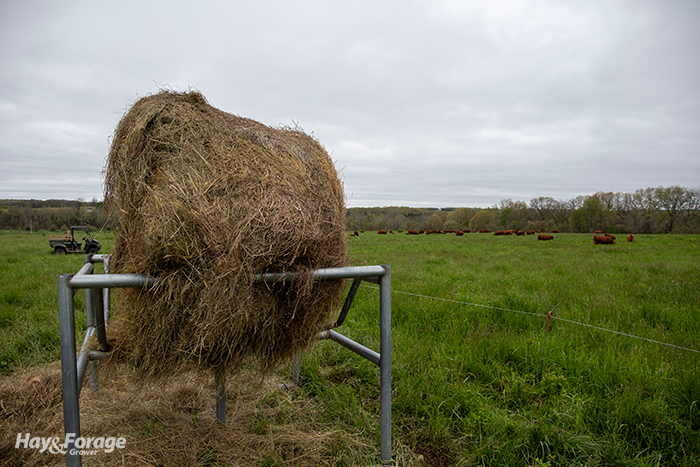
Hay producers, cover your eyes and plug your ears — the following includes 10 reasons to stop making hay.
To be sure, the list comes from Carson Roberts, the state forage specialist with University of Missouri Extension, who weighs the costs and benefits of haymaking from a beef producer’s perspective. He argues it tends to cost more time, money, and labor for cow-calf owners to bale hay than what it’s worth compared to purchasing it.
“Despite the vastness of the hay industry, making hay can be an indicator of an unprofitable cow-calf enterprise,” Roberts says. “Every measure to improve profit margins should be taken to capitalize on the record-breaking cattle prices.”
Here are his reasons:
Save time. Time is a valuable resource, and Roberts suggests producers could use the time they spend making hay to work on marketing their products or improving pastures.
Save fertilizer. In general, Roberts says 1 ton of fescue hay can remove 32 pounds of nitrogen, 12 pounds of phosphorus, and 45 pounds of potassium from the soil, not to mention a suite of micronutrients. “This puts the fertilize value of hay right around $72 per ton,” he asserts.
Save labor. Labor shortages are often cited as one of the biggest challenges farmers face, including when it’s time to make hay. “Even if you can find help, it can be very expensive,” Roberts says.
Avoid high equipment costs. Roberts notes inflation on machinery has outpaced inflation on cattle ten-fold over the past 50 years. “In the 1970s, it only took 14, 500-pound weaned calves to purchase a new round baler,” he says. “Today, even with record prices, it takes 41 of the same calves to pay for a new baler.”
Get rid of equipment. “Nearly all farms in Missouri with fewer than 400 cows would be more profitable if they simply sold their haying equipment and bought hay,” the state forage specialist asserts.
Overcome variable quality. Roberts suggests you can control the quality of the bales you purchase by reading a hay test to guide buying decisions, but you can’t always control the quality of the hay you make, especially with unfavorable weather in the forecast.
Buy cheap hay. Good spring rains and high forage yields have kept hay barns well-stocked in recent years. Roberts says this, coupled with record low cattle numbers, has kept hay prices low.
Protect the soil. Heavy traffic from multiple hay harvests can be hard on the soil. Eliminating this practice from your operation can help reduce compaction and enhance nutrient cycling.
There are winter grazing options. In some regions, grazing winter forage, such as milo or stockpiled tall fescue, can help keep costs to a minimum during the traditional hay-feeding months.
Engage in alternatives. If beef producers started buying all their hay instead of making it, what could they do to boost their cash flow? Roberts suggests custom grazing stocker calves during the spring flush for an extra revenue stream. According to University of Missouri research, a custom stocker enterprise can generate $200 per acre more than making hay.

